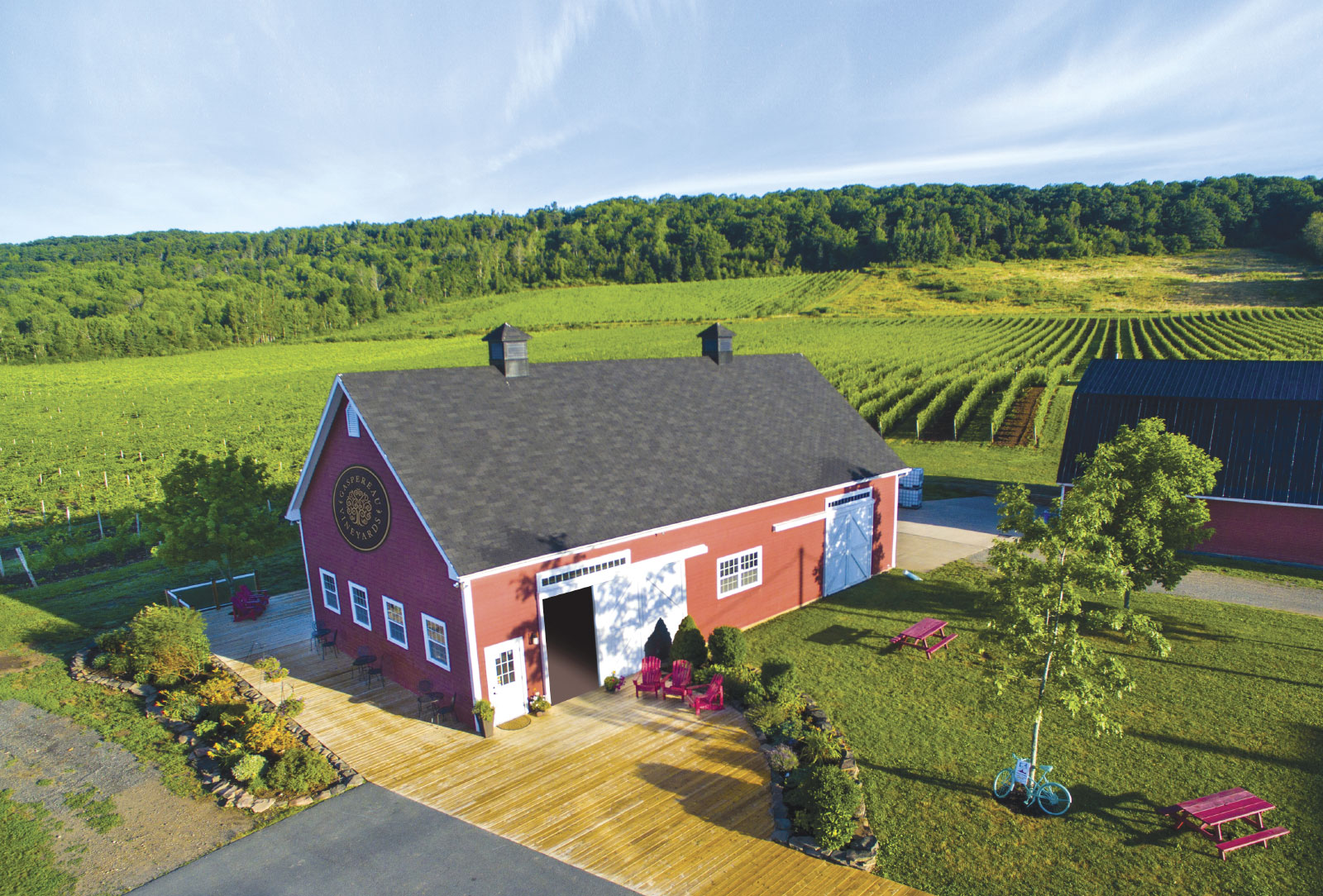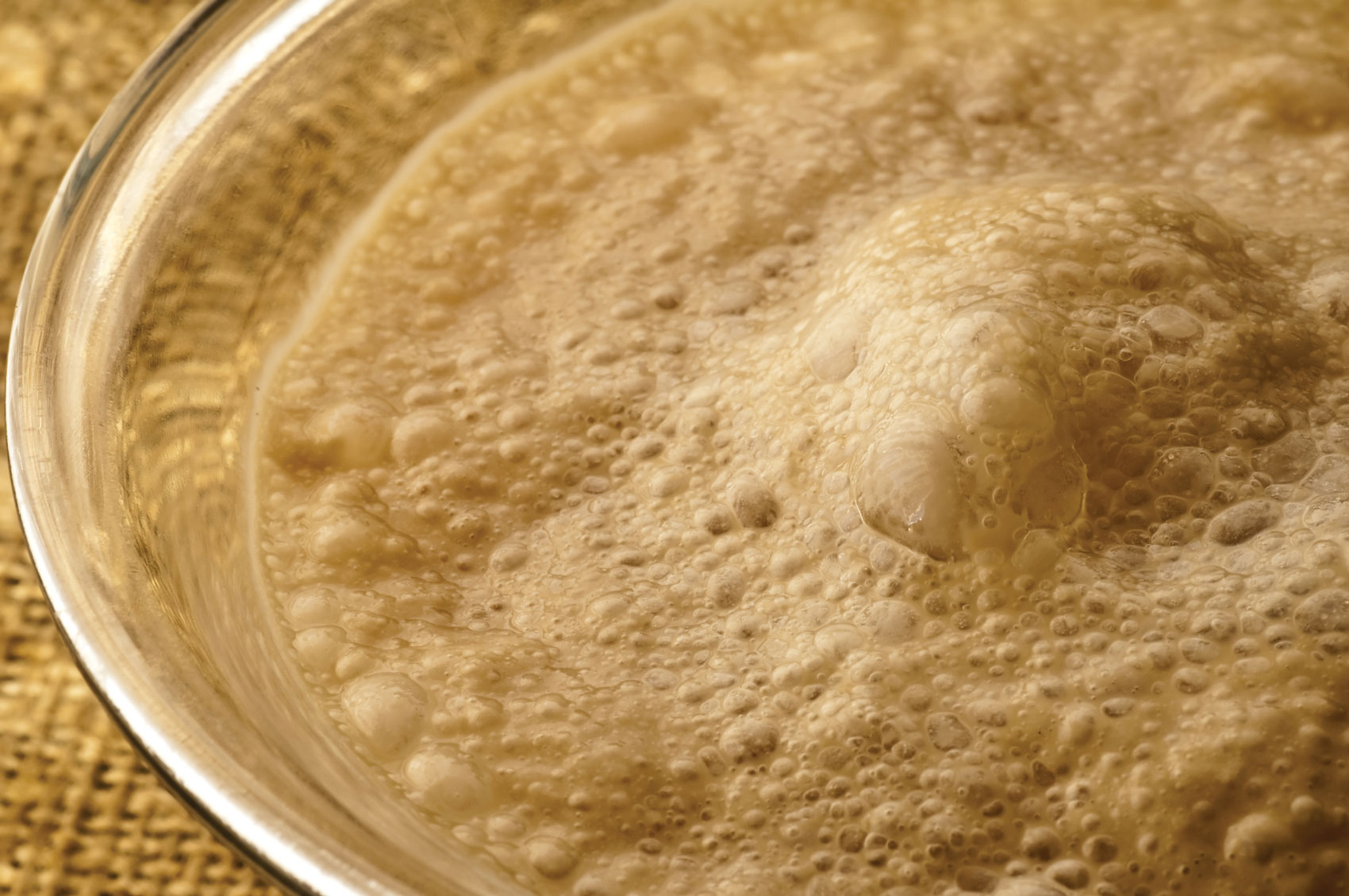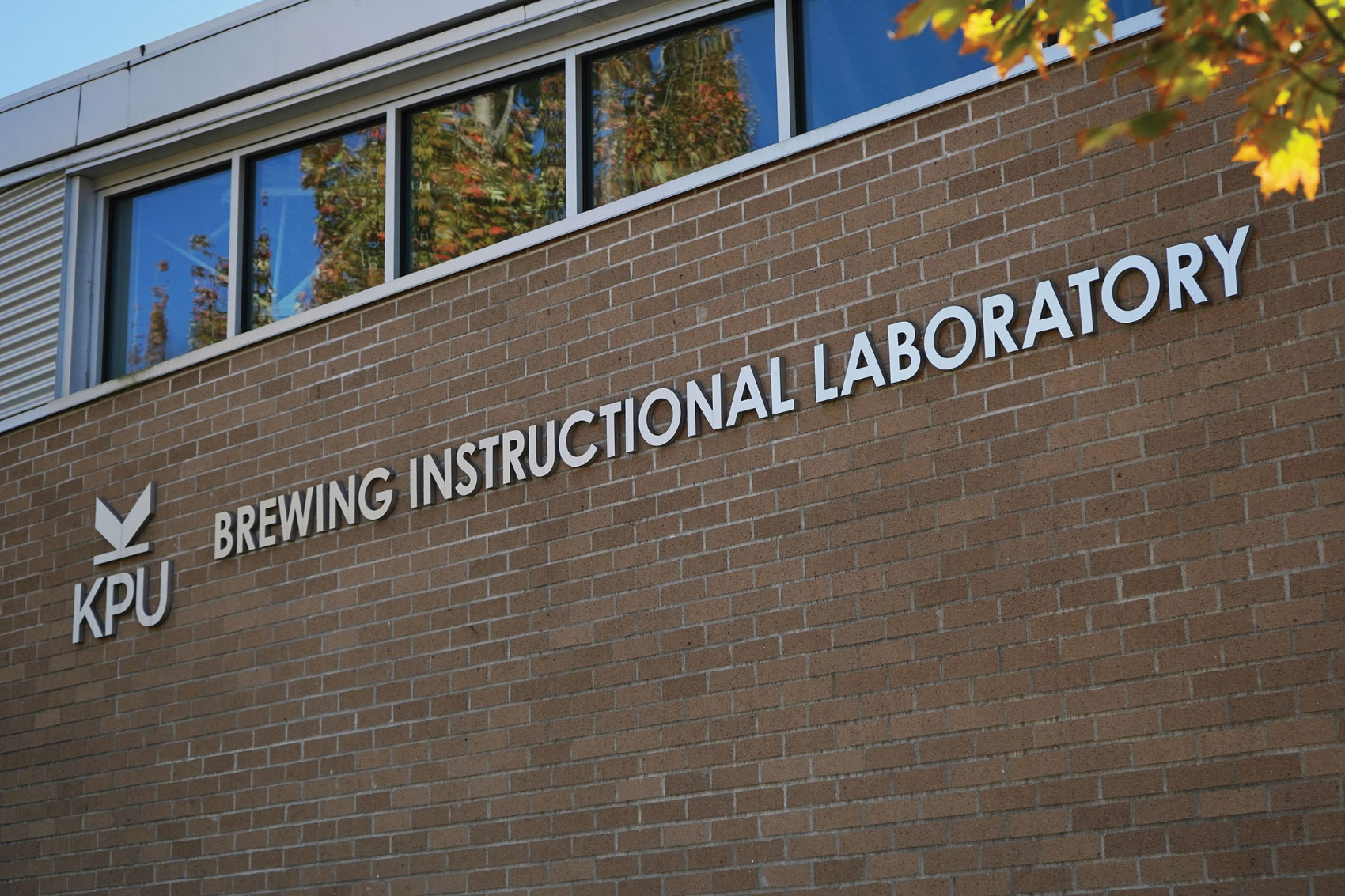Gina Haverstock was planning to become a doctor when a summer job changed her life. At the time, she was completing a bachelor of science degree, with aspirations of going to medical school.
That summer, she moved to her family’s cottage in Malagash, N.S., to study for the admissions exam. Hoping to land some work, she dropped off her resume at Jost Vineyards, a winery located a kilometre or so away from the cottage. “I couldn’t just study all summer. I needed to make some money,” she said. “But I knew nothing about wine, really.” That was about to change. Hans Christian Jost, then owner of Jost Vineyards, had the team taste through the winery’s entire lineup of wine. “I was fascinated. I couldn’t get enough of it,” Haverstock said. “It was a whole new world for me.”
The Jost family started Jost Vineyards in northern Nova Scotia in 1983, one of the first wineries in the province. They planted the first vineyard in the Gaspereau Valley in 1997. In 2004, Gaspereau Vineyards opened its doors to the public.
Gaspereau is situated on an almost 50-acre estate vineyard outside the town of Wolfville. The team farms 50-acres of vineyards, including 12 that were planted in spring 2014. In 2012, Jost and Gaspereau Vineyards were sold to Carl and Donna Sparkes and a short time later, an existing vineyard (now Mercator Vineyards) was purchased. The three wineries now operate under the Devonian Coast Wineries umbrella, and in 2018, Haverstock was named head winemaker for all. Each winery has its own unique style that focuses on different grape varieties and different winemaking techniques.
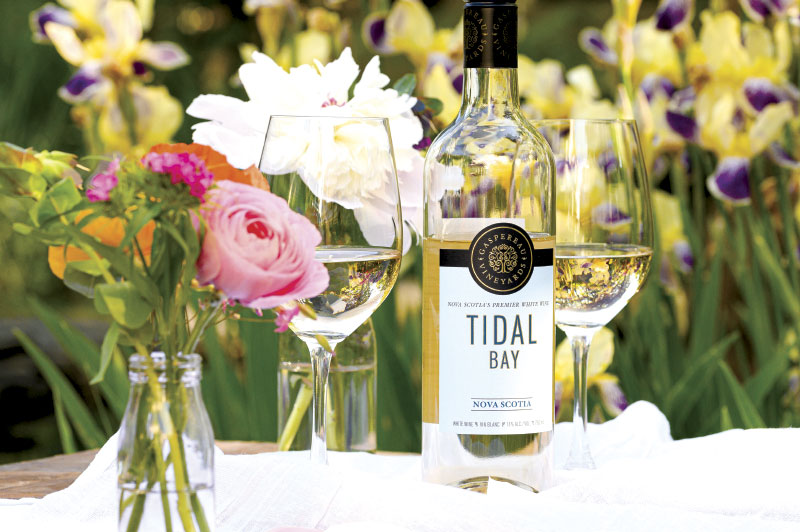
Gaspereau Vineyards is a boutique winery focusing on premium wines, including aromatic and terroir-driven whites and rosés and food-friendly reds. With the exception of Riesling, the only vinifera grape planted at Gaspereau, all their plantings are hybrids. Hybrid varietals include L’Acadie, New York Muscat, Marquette, Seyval Blanc, Vidal and Petite Milo.
The team is especially proud of their Tidal Bay wines, Nova Scotia’s signature white wine style and the province’s first and only wine appellation. Tidal Bay wines are crisp, aromatic white blends that must be made from grapes grown entirely within the province, and every vintage of each wine must be approved by an independent tasting panel. At least 51 per cent of the final blend must be made up of L’Acadie Blanc, Seyval Blanc, Vidal or Geisenheim 318, in combination or individually. Other grape varieties, including Riesling, Chardonnay, Pinot Gris and Frontenac Blanc, are optional and can be included up to a combined total of 49 per cent of the final blend, with the most aromatic varieties limited to a maximum of 15 per cent of the blend.
“Tidal Bay wines represent Nova Scotia’s terroir as a crisp, fruit-forward white blend that pairs naturally with seafood and shellfish. It’s about expressing Nova Scotia as a region,” Haverstock said. “But you can’t just say you’re going to make a Tidal Bay wine and throw it on a store shelf. You have to abide by the Tidal Bay standards when making the wine, and every year, samples of your Tidal Bay must be tested and approved by an independent tasting panel, which ensures both typicity of style and quality.”
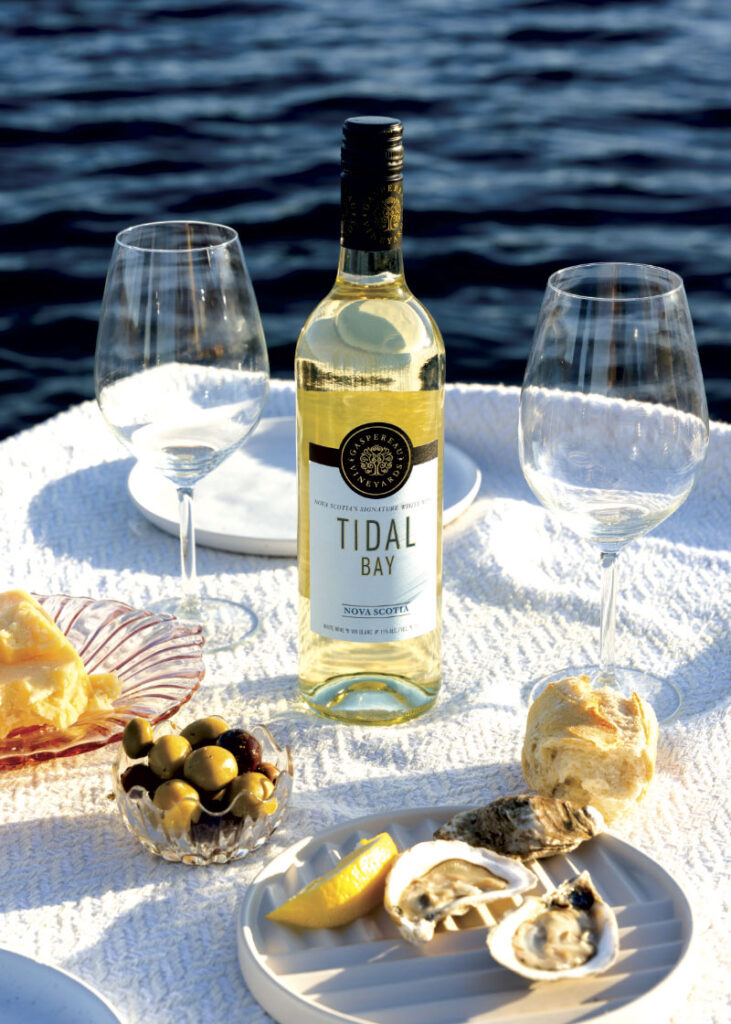
Tidal Bay wines are crisp, aromatic white blends that must be made from grapes grown entirely within the province, and every vintage of each wine must be approved by an independent tasting panel.
All of the Gaspereau wines, including the Tidal Bay wines, are for sale at the winery boutique. They are also at most of the more than 100 Nova Scotia Liquor Corporation stores and private wine stores in the province. They also sell direct to consumers and have their wines at various licensees and restaurants throughout the province.
It should be noted that Gaspereau was initially planted as a satellite vineyard for Jost. When Gaspereau opened its doors as a winery in 2004, Jost continued to use a portion of the grapes from Gaspereau Vineyard, a practice that continues today. Their grapes are both machine-harvested and hand-harvested, depending on the variety and the block.
Since 2018, much of the equipment, resources and teams have been integrated between the wineries, which is why the Gaspereau team can access more staff and specialized equipment than most wineries of its size. For example, the wineries share a 2022 Gregoire Grape harvester among their estate vineyard sites as well as their contract grape growers. They also have two membrane presses: a Diemme Enologia Velvet 50 hectolitres (hL) initially purchased for Gaspereau, as well as a Bucher Vaslin 100 hL for Jost. “Both presses function well. One is a bit easier to clean and is a bit more intuitive to use, while the other has features for easier loading when whole cluster pressing,” Haverstock said.
The winery has always focused on cool-fermented whites in stainless steel and has concentrated its barrel program on reds. They use both French and Hungarian oak barrels. Oak is used sparingly to enhance the structure and supply subtle aromatics in balance with the fruit, rather than to overpower the cool-climate red style.

In 2024, Haverstock was awarded the Wine Growers Canada Karl Kaiser Winemaker of the Year Award. She is the first female winemaker and the first winemaker outside of British Columbia and Ontario to receive the prestigious annual award, which is named in memory of Karl Kaiser, one of the founders of the modern Canadian wine industry.
“To be associated with such accomplished individuals and to receive an award in memory of Karl Kaiser himself is truly humbling,” Haverstock said. “This award is not just a personal milestone, but a testament to the collaborative spirit and hard work of our entire team.”
The overall company is led by a management team with managers from sales and marketing, winemaking and grape growing, and finance and production that report directly to the Sparkes. The vineyards in the valley (both Mercator and Gaspereau) are managed by vineyard manager Becca Griffin and assistant vineyard manager Andrea Burbidge, with assistance from long-time Jost Vineyard manager Sven VonKintzel and oversight by Yvonne Schoening. They also have several contract grape growers whose grapes supplement the varieties needed for production.
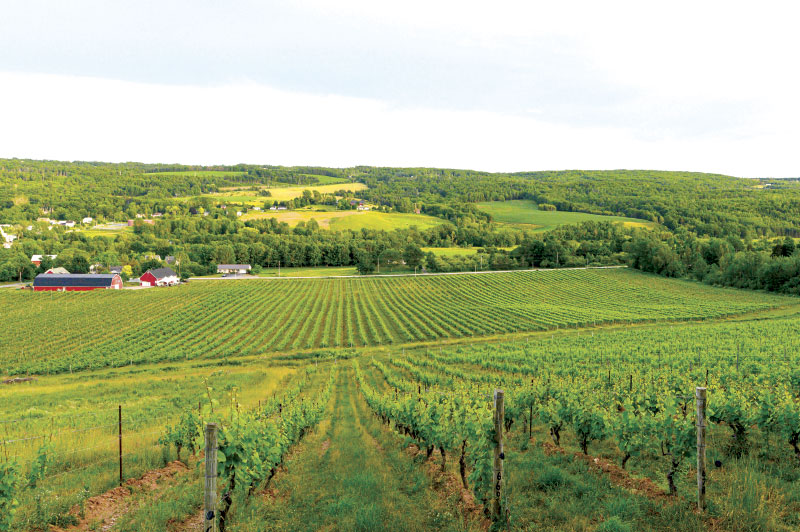
Cellar master and winemaker Dave Beardsall has been with the team for more than 30 years, since 1991. “He is very much in control of the day-to-day operations, including ensuring the wine’s stability every step of the way, through filtration and right up until bottling time,” Haverstock said. Roles are intertwined, and many, including Haverstock, work at the sister wineries, too.
Harvest typically starts around mid-September, something that has shifted due to the warming effects of climate change. “I remember when we didn’t start harvest until after Thanksgiving,” said Haverstock. The 2025 vintage so far has been warm and dry, suggesting harvest may be earlier than usual, except for those areas experiencing drought conditions, which may experience a bit of a delay. “In either case, if the weather holds, we are poised for a stellar 2025 vintage with excellent quality and wines with concentrated flavours,” Haverstock said.
One thing they will be intensely monitoring is the flavour development and the acid reduction in the Tidal Bay blocks. “We want to achieve optimal flavour ripeness balanced by the essential backbone of acidity that is critical for Tidal Bay’s refreshing profile. Tidal Bay wines have a required minimum acid level,” she said. “It’s a balancing act, for sure.”
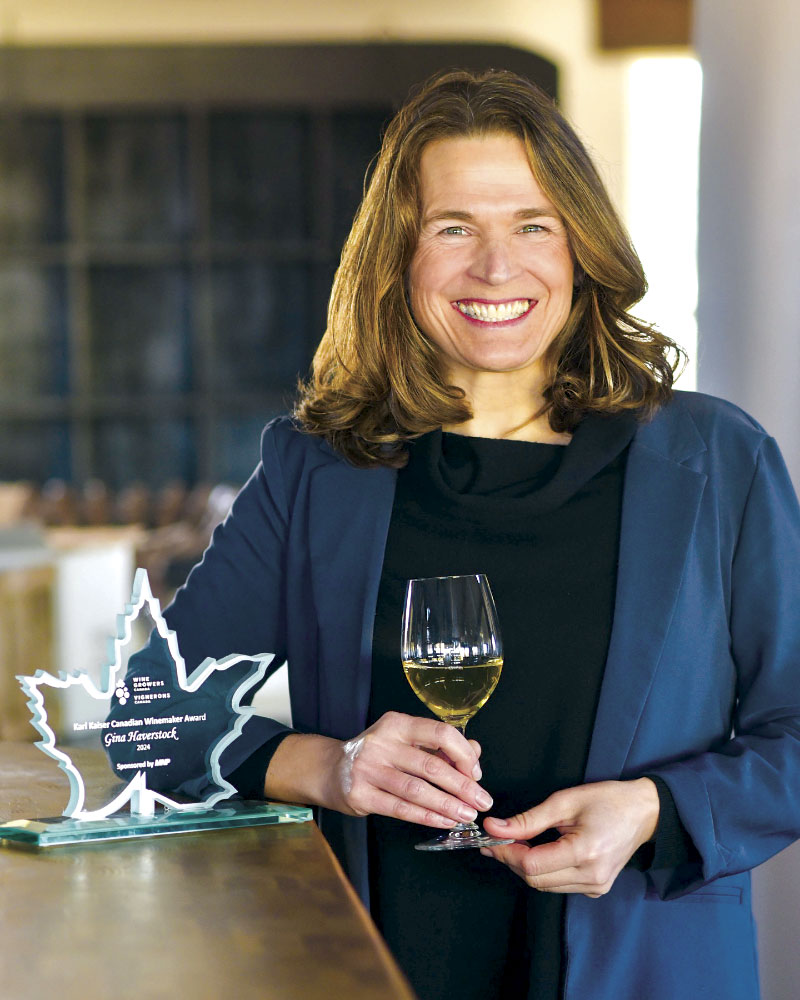
The company, Carl says, is planning an expansion and reconfiguration of their operations to improve productivity and reduce waste, something that is part of their commitment to sustainability. In the vineyard, they compost all harvest waste, and in the cellar and tasting room, they seek out sustainable supply chains, too. “Sustainability to us means creating balance and resilience to endure the storms, whether they are natural, economic or political,” Carl said.
Being a winery owner or winemaker is never easy, but this past year, the team has seen a resurgence in visitors, as people look to buy regional and locally-made Canadian products. That’s something that the winery team sees as important, too. They source local goods and services where possible, and they support arts, music, health and wellness charities and non-profits in their community. They also contribute to the Nova Scotia Nature Trust, a charitable organization that focuses on land conservation.
“We are part of a great community and support is a two-way street,” Carl said. “While we hope people in the community support local, we do it because it’s the right thing to do.” Supporting Wine Growers Canada is also important to the Gaspereau team. “Wine Growers Canada is the true voice of the industry in Canada. Membership means we get involved in issues that affect the entire industry in Canada and beyond. You gain a broader perspective and reach more than just within the industry in Nova Scotia,” said Carl.
For Haverstock, though, there may be nothing better than seeing her own region thriving. “I’m excited to see more people, tourists and locals alike, enjoy our high-quality wines paired with our province’s top-notch cuisine and delivered with our warm and welcoming hospitality,” she said. “And I’m excited to see the Nova Scotia wine industry continue to grow and prosper.”

